
That Familiar Panic
Ever had that moment where your stomach just drops? You’re looking at your leg, already cranky because of the swelling, and… great. Is that a juicy, water-filled bubble just hanging out on your ankle? Ugh. (Seriously, universe? Wasn’t the bruising and hobbling bad enough?)
If this has happened to you—yep, I see you—hello from the club. I’ve been there. I remember one night, after a day basically dragging my left foot around the house, I kicked off my sock and found this squishy little blister winking up at me. Such a vibe, right? Instant worry, and a whole lot of “Now what?”
If you’re freaking out a little right now, take a breath. This isn’t the end of the road. Let’s figure out what to do for the drainage of water blister due to dwelling of leg injury together—with stories, side notes, and the real-deal steps that actually make a difference.
What’s Going On Down There?
Blisters and Leg Swelling: The Not-So-Dream Team
Let’s break it down in regular-people speak. When your leg swells up—maybe from a sprain, a bump, or something more complicated like edema—sometimes, out pops a water blister. What’s happening is the injured tissues are sending fluid (yep, basically water mixed with body goo) just under the skin’s top layer. Ta-da! You get a balloon-like bubble, sometimes clear, sometimes a little cloudy.
In case you’re curious, these are usually called edema blisters. (You can see real examples at Pictures of edema blisters—pro tip: maybe not right before dinner.) According to plenty of clinics and medical guides, these blisters are basically your body trying to protect the skin underneath while the injury works itself out.
Quick sidebar: Water blisters on the leg aren’t always from cuts or scrapes—swelling alone can bring them on. If you want to see the difference between friction blisters and edema blisters, check out Water blisters on legs pictures. Wild how different legs can look!
To Pop or Not to Pop?
That’s the Real Question
Okay, let’s have some real talk. Seeing a blister can trigger the “just get rid of it” impulse. Maybe you’ve heard people say, “Just pop it with a needle!” (Insert my grandma’s voice here, for some reason.) But pausing here is smart…
I’ll be honest: popping a blister sounds satisfying. But according to health spotlights like research on water blister treatment, it’s not the best plan. Breaking the skin opens up a VIP entrance for germs—especially if you’re already swollen or slow to heal. A minor thing can become infected, and oooh… then you really regret your choices.
My story: I once gave in, poked one on my heel, and thought I’d nailed home wound care. Spoiler: Three days later, I was limping, clutching antibiotic ointment, and swearing off homemade “surgery.” Sometimes, patience is the best medicine.
| Approach | Pros | Cons |
|---|---|---|
| Popping It | Immediate relief (sometimes) | Risk of infection, pain, scarring |
| Letting It Drain Naturally | Less chance of infection, better overall healing | Takes a few days… but worth it |
Gentle Steps: How to Handle It
Let’s Get Practical (and a Bit Chill)
So, what to do for the drainage of water blister due to dwelling of leg injury? Here’s your real-world, non-doctor but experienced-patient guide.
- Keep It Clean.
It’s not glamorous, but mild soap and water are your new best friends. Gently wash the area—no scrubbing!—and then pat it dry.
- Resist the Urge to Burst.
If it’s not huge or super painful, cover it loosely with a breathable bandage. Think of it as “setting a protective tent.” This keeps junk out while letting your skin heal underneath.
(If you need to see what a healing blister looks like, check out Water blisters on legs pictures for the real stuff.) - Reduce the Swelling That Caused It.
Elevation is magic. (Seriously. Found this out after a long day of desk work with my swollen leg dangling near the floor… all that did was make it worse.) Each day, plop down with your leg propped above your heart for 15-20 minutes. Let gravity help the swelling—and blister—go down on its own. Bonus: pile up the pillows and you get to feel ridiculously pampered.
- Cool It Down.
Grab a cold pack or just a bag of frozen peas wrapped in a towel. Hold it on the puffy spot for not more than 15 minutes at a time. It chills the swelling and makes the area feel way less angry.
- Mind Your Salt.
Salt is basically “swelling fertilizer.” Keep it low. Drink plain water or herbal tea to help flush extra fluid (your kidneys will send a thank-you note later).
- Protect the Skin.
Loose bandages, gentle socks, and soft shoes are the way to go. Anything tight will just squish the blister more and slow healing.
What If You Really Have to Drain It?
Sometimes, it gets huge or you just can’t walk without pressure. Okay, but breathe—don’t just jab at it with a safety pin.
Here’s the less-scary version, with gentle reminders from clinics like Cleveland Clinic and Healthline:
- Wash your hands and the skin (again: mild soap).
- Sterilize a small needle with rubbing alcohol and boiling water.
- Poke a tiny hole at the blister’s edge. Let fluid drain, but… do not remove the skin flap! It acts like a natural bandage.
- Pat it dry, smooth the skin, cover with a clean, non-stick bandage.
Change the bandage daily, and watch for “uh-oh” signs like redness, pus, or new pain. If you see any of that, it’s time to call for backup—medical backup, that is.
(Need reference photos? Both Pictures of edema blisters and Water blisters on legs pictures can help you track if things look okay or not.)
What If It’s Getting Worse?
Signs you should not ignore
Let’s not play around here. If your blister:
- Becomes red, hot, or starts leaking pus
- Makes the surrounding skin streaky or sore
- Comes with fever or chills
…that’s your cue. Stop what you’re doing. Ring up your doctor or wound care specialist. No jokes. Especially if you have more stubborn stuff going on (like diabetes or chronic edema)—these can go south fast according to medical reviews.
One time, a friend thought she could “wait it out”—ended up with a red, throbbing mess and needed antibiotics. Lesson learned: your gut (and the hurt) will tell you when home first-aid has stopped cutting it.
Why Did You Get the Blister Anyway?
The Edema Connection
If your leg injury caused the swelling (called edema), that fluid’s gotta go somewhere. Sometimes it just sits below the skin, which then lifts and… yup, that annoying blister forms. People who sit or stand for long periods, are older, or ever had heart/kidney issues are more likely to see this.
For visual learners—again, it really helps to compare your leg to Pictures of edema blisters. Sometimes you can track if you’re healing or headed for more trouble.
Extra tip (from experience): If you keep swelling after an injury, talk to your doc. There could be more going on under the surface!
Prevent More Blisters: Smart Moves
No One Wants a Repeat Performance
Once you finally get through this fun little hurdle, let’s keep it a one-time show. Here are small tweaks that make a real difference:
- Wear loose, comfy shoes—skip anything rubbing while you heal.
- Take movement breaks—bit of motion helps more than you’d think.
- Compress if needed—special socks help move fluid, but clear it with your doc first.
- Stay moisturized—dry skin cracks way faster, especially swollen spots.
- Limit salty snacks—for the love of your ankles, go easy on chips!
Honestly, after my own ugly leg episode, I endlessly stalked water blisters on legs pictures just to reassure myself I wasn’t becoming a science experiment. Turns out, recovery is a little weird for everyone. Just listen to your body and treat it to the good stuff (rest, hydration, not popping every bubble that shows up).
Final Thoughts: You Got This
Let’s be real—dealing with a water blister on a swollen leg isn’t how anyone wants to spend their week. But you’re not stuck. What to do for the drainage of water blister due to dwelling of leg injury boils down to keeping it clean, protecting the blister, letting time (and gravity!) do its thing, and only draining it if walking is impossible… and then, with clean hands and a cool head.
If anything feels off—a fever, strange pain, spreading redness—don’t play hero, ask for help. No shame. Most of the time, this will pass, you’ll heal, and you might even pick up a few “Yep, I survived that!” stories to tell. (Or blog about, like me.)
So—what do you think about this approach? Ever tried something different that worked wonders? (Or, honestly, made things worse?) Chime in below. If you’re in the thick of it, hang in there. A few smart moves and some patience, and you’ll be back to walking (or hiking, or running, or dancing) before you know it. Take care of those legs—they’ve got places to go!




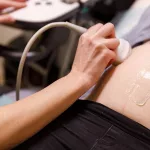


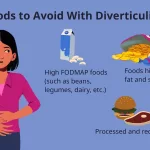




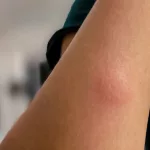
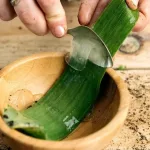

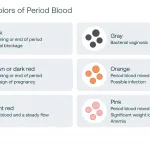
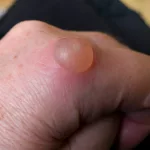

Leave a Reply
You must be logged in to post a comment.